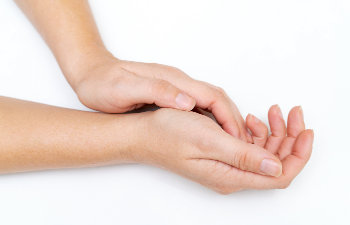Dupuytren’s contracture is a progressive condition that can significantly affect the function of the hand, making daily tasks difficult or impossible. This disorder involves the thickening and tightening of the fascia, a connective tissue layer in the palm, which can cause fingers to bend inward and limit movement. At Steven Struhl, MD – Shoulders & Knees in NYC and Westchester, we offer advanced treatments to restore hand function and improve the quality of life for patients with Dupuytren’s contracture.
What Is Dupuytren’s Contracture?
The fascia in the palm anchors the skin to provide a firm surface for gripping and movement. Dupuytren’s contracture, also known as Dupuytren’s disease, occurs when this fascia thickens and contracts, forming nodules and cords that restrict finger movement. Over time, this condition may pull one or more fingers into a bent position, severely limiting hand dexterity.
Symptoms of Dupuytren’s Contracture
The symptoms of Dupuytren’s contracture often develop slowly and worsen over several years. Common signs include:
- Nodules or lumps: Small, firm lumps that form on the palm.
- Cord formation: Thickened cords develop under the skin, pulling fingers inward.
- Finger contractures: In advanced stages, fingers may be permanently bent toward the palm, reducing the ability to straighten or spread them.
In severe cases, hand function is significantly impaired, making simple actions like shaking hands, typing, or holding objects challenging.
Causes and Risk Factors
The exact cause of Dupuytren’s disease remains unknown, but certain risk factors increase its likelihood:
- Genetics: The condition often runs in families, particularly those of Northern European descent.
- Gender: Men are more likely to develop Dupuytren’s contracture than women.
- Age: The condition typically appears after age 50.
- Lifestyle factors: Alcohol use and smoking are linked to higher risks.
Dupuytren’s contracture affects approximately 7-29% of individuals of European descent, highlighting its prevalence in this demographic.
Restoring Hand Function with Treatment
Although there is no cure for Dupuytren’s contracture, a range of treatments can slow its progression and restore hand function. At Steven Struhl, MD – Shoulders & Knees, we tailor treatment plans to each patient’s needs and disease stage.
Non-Surgical Treatments
For early-stage Dupuytren’s contracture, non-surgical options may help manage symptoms:
- Cortisone injections: These can reduce inflammation and slow disease progression.
- Physical therapy: Exercises and splinting may help maintain mobility.
Surgical Treatments for Advanced Cases
When the condition progresses to the point of finger contracture, surgical intervention is often necessary. Dr. Steven Struhl offers the following procedures:
- Fasciotomy: This minimally invasive procedure involves dividing the thickened fascia to release the tension on affected fingers.
- Subtotal palmar fasciectomy: Diseased tissue is surgically removed from the palm to restore finger movement and improve hand function.
Both procedures aim to alleviate symptoms, restore dexterity, and prevent further complications. Dr. Steven Struhl has extensive experience in orthopedic hand conditions, offering compassionate care and the latest treatments for Dupuytren’s contracture. With locations in NYC and Westchester, we provide convenient access to advanced surgical and non-surgical options to help patients regain independence and improve their quality of life.
Take the First Step Toward Restoring Hand Function
If you’re experiencing symptoms of Dupuytren’s contracture, early intervention can make a significant difference. Contact Steven Struhl, MD – Shoulders & Knees in NYC, to schedule a consultation. Let us help you regain mobility, comfort, and confidence in your hand’s function.




